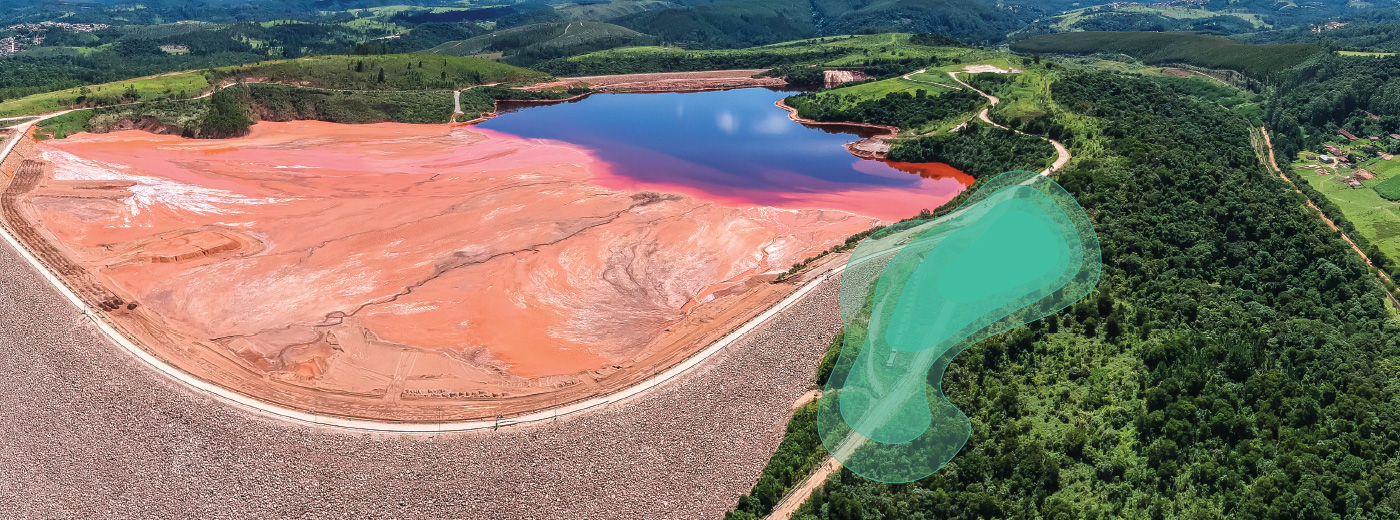Blogs
Tailing Dams Monitoring: What You Need to Know
October 17, 2022


Brumadinho is a municipality in the Brazilian state of Minas Gerais, in the country’s mineral-rich southwest. In 2019, “Dam I” at an iron ore mine about five miles outside the city collapsed. Dam I was a tailings dam, storing bi-products of mining. Tailings are mine waste, often a toxic slurry of dirt, water, and rocks, with metal and chemicals mixed in. With no place else to go, it’s expediently stored in earthen retaining structures called tailings dams situated near the mine. The dams themselves may be constructed from tailings.
When Dam I failed, 12 million cubic meters (3.2 billion gallons) of tailings rushed through a nearby valley for 10 brutal kilometers (6.2 miles). The official death toll was 270, including 11 people who have yet to be recovered. Agriculture suffered. Pollution from the collapse reached water supplies in 21 municipalities up to 120 km (75 miles) from the collapse site. You can still see the scar, and Brumaninho is now defined by the disaster it suffered. And this was not even the first tailings dam failure in the state of Minas Gerais, coming just four years after the human and environmental catastrophe of a tailings dam collapse in Mariana.
There have been over 200 documented tailings dam (1) failures in the last hundred years, and many are never reported. A paper published in Environmental Sciences estimates the failure rate of tailings dams at 1.2%, “more than two orders of magnitude higher than the failure rate of conventional water retention dams, reported to be 0.01%.” Failures occur approximately every eight months (2).
There is no official registry of tailings dams, but estimates generally put the total number at about 18,000 worldwide, with approximately 3,500 active.
It should be noted that Dam 1 had been inactive for seven years prior to failure. Tailings dam integrity monitoring can be an expensive proposition for a mine that no longer produces; one of the major causes of tailings dams failures is inattention to dams where operations have ceased.
Several reasons for tailings dams failures have already been mentioned. Using mine waste to build dams that contain mine waste is about cost, not good engineering. Whether the dam is operating or inactive, proper maintenance is expensive with no profit to show. Climate change-driven precipitation, seen in more frequent, severe, and widespread flooding events, puts additional strain on these structures. The Syncrude Tailings Dam in Canada is the world’s tallest, reaching 88 meters at points, equal to a 26-story building, and it can hold 540 million cubic meters, almost 6,500 times the volume released by Dam I. Taller dams, it should noted, are more likely to fail.
The failure at Dam 1 was caused by static liquefaction, a sudden loss of strength when loose material such as sand can no longer drain. Other causes include: overtopping, where the content level and wind setup exceed the crest of the dam; sequential raising of the dam (making it taller at time intervals to accommodate more volume) instead of designing and building a finished product; failure of the surrounding slopes; seismic events; and loose regulations, poor enforcement, or both.
Seepage, or water slowly permeating through the dam and its foundation, can also lead to failure if left uncontrolled. All earthen dams, (most tailings dams are earthen dams, made of earthen materials) feature some amount of seepage. If velocity and quantity reach the point of eroding soil from the foundation or embankment, the dam can fail. Seepage can also saturate and weaken the slopes, again leading to failure.
And time. Time is a problem.
There is no end date on the required time a tailings dam must last. “More than 10,000 years” (twice the length of recorded human history) was suggested in a study published by the Center for Science in Public Participation (3). For reference, Dam I was 47 years old.
There are a number of steps that could be taken to reduce the risk of failure, including better regulations, better enforcement, and more money allocated to maintenance. But there is little incentive. Mine operators may be punished for the dams that fail, but are rarely applauded or rewarded for those that don’t. Failure may be seen as the cost of doing business.
Another solution is better tailings dams monitoring. In fact, the International Council on Mining & Metals, in its Global Standards on Tailings Management, places a very high priority on better and more extensive tailings dam monitoring.
Many of the techniques used to monitor tailing dams are limited in their range, effectiveness, or both. Traditional ground penetrating radar can be used but is less effective on dynamic structures like tailings dams than on solid structures. Laser scanners have been used to detect movements in a dam wall, but the hardware investment is prohibitive and the technology works best only in specific situations. Seismic sensors have their own limitations. Other radars, such as InSAR, show movement, but not the underlying cause.
EarthWorks uses satellite-based SAR (synthetic aperture radar) to bring an entirely new capability to tailings dam monitoring: the ability to locate and monitor soil moisture seeping through or under tailings dams.
Carried on a band of the spectrum called the L-band, SAR can discern soil moisture several feet below the ground. And it can survey even the largest tailings dams at once. (The Syncrude dam has an 18-km (11-mile) circumference.) Repeated satellite passes will discern changes over time that precede larger problems so preventive measures can be taken.
As we mentioned, seepage can lead to tailings dam failure through several different mechanisms. An affordable, accessible technology for ongoing, wide-area soil moisture monitoring of tailings dams has always been a necessity. Now, with ASTERRA EarthWorks, it’s also a practical reality.
Interested in learning more about the role of EarthWorks in monitoring tailings dams from space? We invite you to browse our products and services or get in touch with us today!